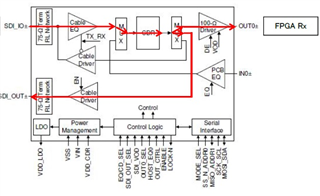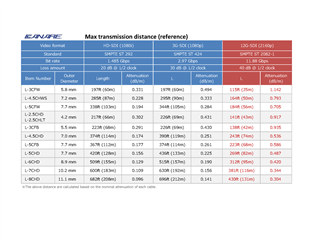Tool/software:
Hi,
In the LMH0397 datasheet, the following is written in the OUT- and OUT+ terminals of pins 22 and 23 under Pin Functions.
Differential outputs to host video processor. On-chip 100-Ω differential termination.
Requires external 4.7-µF, AC-coupling capacitors for SMPTE applications.
We use the LMH0397 in SMPTE applications.
It says "4.7μF AC coupling is required," but if there are no problems with the device receiving this signal, would DC coupling be okay?
I think they just want to say that if you are AC-coupling in SMPTE applications, you need a capacitor of 4.7μ or more, but I would like to confirm just to be sure.
Thanks,
Conor



